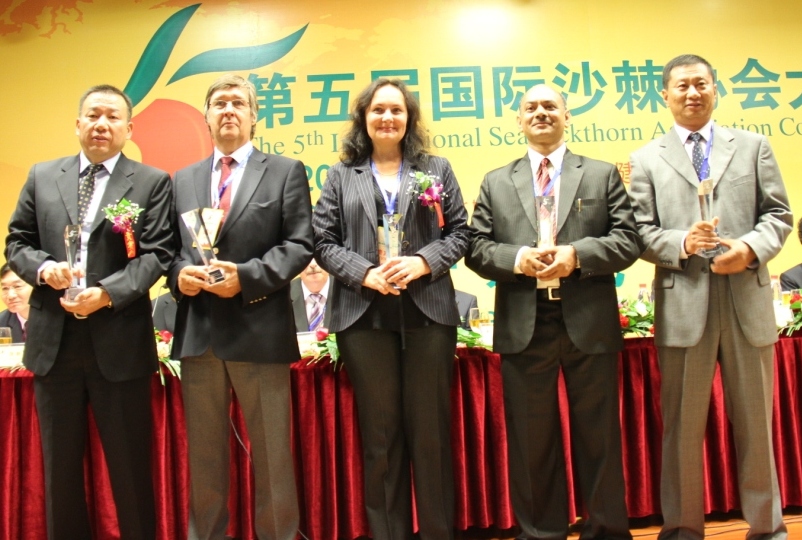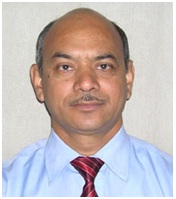Professor
Consortium Principal Investigator
World Bank Project on Seabuckthorn (NAIP)
Department of Biology & Environmental Sciences
CSK Himachal Pradesh Agricultural University
Palampur 176062, Himachal Pradesh, INDIA
E-mail: virendrasingh2003@yahoo.com
Mob: 09418045229
I have a mission in my life
I joined the Department of Biosciences and Biotechnology, University of Roorkee (now called as I. I. T. Roorkee) as a Ph. D. student under the supervision of Dr. G.S. Randhawa in 1984. Despite limited support and funds, Dr. Randhawa managed to establish a laboratory of Biotechnology and motivated me to work hard. We both used to come early in the morning and started collecting literature on the Molecular Genetics of Nitrogen Fixation. Prof. D. P. S. Verma in Canada was probably a driving force globally on the subject in those days. Dr. Randhawa designed experiment for me for the development of genetic map of Azotobacter. Working on this new area of molecular genetics was very interesting and things went very well for a year or so.
Once an African student invited me to join him to visit remote Himalayas. I travelled for several days and it saddened me seeing the way beautiful natural forests were being destroyed by illegal felling of trees by business mafia in interior Himalayas. I could not sleep for a month and thought about the purpose of my life. I decided to leave the University of Roorkee and do something in the field of environmental conservation. Leaving suddenly pained Dr. Randhawa very much and it was also a very difficult decision for me. After completion of my Ph.D. from Kumaon University, Nainital, I joined as a scientist in CSK Himachal Pradesh Agriculture University, Palampur's Research Centre at Kukumseri in remote area of district Lahaul-Spiti, a cold desert in Himachal Pradesh, bordering with China, with difficult terrains, low oxygen and lot of snow during winter. Sh. Virendra Verma, a Gandhian, the then Governor of H.P. asked me to do some thing in research for the control of soil erosion and siltation of rivers, reducing lives of hydroelectric power stations and causing floods in Punjab, Haryana and J&K. I came to know about seabuckthorn, a multipurpose plant, which not only meets short term economic needs of the people but also helps in long term environmental conservation. I walked thousands of kilometres on foot, conducted several surveys and created awareness about the economic and ecological potential, besides doing research work on genetic diversity, propagation and cultivation technologies on this wonder plant. I attended an International Conference on seabuckthorn in 1995 at Beijing and understood that world was fast moving towards seabuckthorn. I felt that there was a need to do a lot of research work before its ecological and commercial exploitation could be done. In my own university, I made a team of scientists from different disciplines, who took up research on resources development, food products and experimental studies on the animals. Then I visited, delivered lectures and provided literature and samples to several universities and institutes of the country.
In 2001, we organized a big International Conference on Seabuckthorn at IIC, Delhi, which proved a turning point for the commercialization of the seabuckthorn in our country. Presently, more than 35 R&D institutions are working on seabuckthorn in India and India is placed second in research on medical aspect of seabuckthorn globally. I also visited China, Russia, Germany, Canada, Finland and other countries to study their success stories on seabuckthorn. During my stay at Kukumseri, I standardized the propagation, micropropagation and cultivation methods of seabuckthorn, besides raising a germplasm bank of seabuckthorn, which also included thornless varieties from abroad.
Presently, I am a Coordinator of a world bank funded R&D scheme entitled "A value chain on seabuckthorn" for Rs. 4.11 crore (2008-13) for improving the productivity and production of seabuckthorn, adding value and linking the farmers with market. Our team has trained over 500 farmers in seabuckthorn cultivation, provided 200,000 saplings of the high yielding and characterized genotypes of seabuckthorn to 55 farmers for cultivation in 100 ha, standardised fruit harvesters and animal feed and conducted experimental trials on seabuckthorn drugs for the wound healing, anti-microbial agent and gastric ulcer, besides producing several food products. We also organized two national conferences on seabuckthorn under this project. I also became a part of a DBT funded mega project of 7 institutes to conduct the study on genetic diversity of seabuckthorn in entire Himalayas (2009-12) and presently I am preparing the monograph on the subject. I edited 3 volumes of a book entitled "Seabuckthorn-A Multipurpose Wonder Plant" and authored another book entitled "Seabuckthorn: Modern Cultivation Technologies", which became quite popular in over 40 countries. I also published 25 research papers and 25 articles on seabuckthorn in reputed international and national journals. I never applied for any award thinking that unless seabuckthorn becomes a full success story in India, I should not apply for it. However, International Seabuckthorn Association (ISA) recognized my contribution on seabuckthorn and awarded me, along with four other global scientists, ISA's Outstanding Research Contribution Award during ISA's Conference at Xining, China on 4th September, 2011. I also got opportunities to chair technical sessions in many international conferences on seabuckthorn abroad.
Since there was no nodal agency on seabuckthorn, commercialization and development of seabuckthorn was a very slow programme in India. We convinced and formulated a basic plan for the Ministry of Environment and Forests (MOEF), which has now launched a National Mission on Seabuckthorn of Rs. 1000 crore under Green India Programme. Its main aim is to raise 1 lakh hectare land under seabuckthorn for the environmental conservation and cultivation of improved varieties by farmers, besides establishment of many small and medium scale seabuckthorn industries, which will help in eradication of poverty and generate employment for youths in border areas of country and result in production of several health food, cosmetics and life saving drugs like cancer and gastric ulcer for use of the common man.
Today, I have a sense of purpose in my life. What I have achieved during the last 20 years was shaped during my stay of about 18 months with Prof. Randhawa, a humble and great human being and a very fine scientist. Professionally, I became successful because of my basic training as a researcher, understanding the importance of science and learning some human values from Dr. Randhawa. Fortunate are those students who have worked or are working under his guidance to contribute to the science and humanity.
Virendra Singh

Prof. Virendra Singh (second from right), after receiving "Outstanding Research Contribution Award" from International Seabuckthorn Association (ISA) at Xining, China, on 4th September, 2011. The other awardees were Prof. Heikki Kallio (Finland), Prof. Thomas Moersel (Germany), Prof. Lu Rongsen (China), Prof. Elizaveta Panteleeva (Russia) and Prof. Ludmila Shipulina (Russia).
